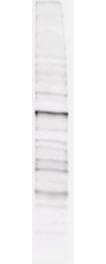Phosphothreonine Antibody (18F6)
Novus Biologicals, part of Bio-Techne | Catalog # NB600-878

Key Product Details
Species Reactivity
Non-species specific
Applications
Validated:
ELISA, Western Blot
Cited:
Western Blot
Label
Unconjugated
Antibody Source
Monoclonal Mouse IgG1 kappa Clone # 18F6
Concentration
This product is unpurified. The exact concentration of antibody is not quantifiable.
Product Specifications
Immunogen
Phosphothreonine Antibody (18F6) was produced after repeated immunizations of balb/c mice with phosphothreonine conjugated KLH.
Reactivity Notes
Reactivity is specific for phosphothreonine and minimal cross reactivity is observed against phosphoserine or phosphotyrosine
Specificity
Reactivity is specific for phosphothreonine and minimal cross reactivity is observed against phosphoserine or phosphotyrosine.
Clonality
Monoclonal
Host
Mouse
Isotype
IgG1 kappa
Description
Store vial at -20C prior to opening. Aliquot contents and freeze at -20C or below for extended storage. Avoid cycles of freezing and thawing. Centrifuge product if not completely clear after standing at room temperature. This product is stable for several weeks at 4C as an undiluted liquid. Dilute only prior to immediate use.
Scientific Data Images for Phosphothreonine Antibody (18F6)
Western Blot: Phosphothreonine Antibody (18F6) [NB600-878]
Western Blot: Phosphothreonine Antibody (18F6) [NB600-878] - Phospho Threonine monoclonal antibody, clone 18F6 is shown to detect threonine phosphorylation of proteins in a lysate from A-431 cells stimulated with EGF.ELISA: Phosphothreonine Antibody (18F6) [NB600-878]
ELISA: Phosphothreonine Antibody (18F6) [NB600-878] - was tested against BSA conjugates of phosphothreonine (grey squares), phosphotyrosine (black triangles) and phosphoserine (open circles). Each well was coated with 0.1 ug of conjugate. The starting dilution of antibody was 1/1000 and each point on the X axis represents a 2-fold dilution. For detection, an HRP-conjugated Goat anti-Mouse IgG was used as secondary antibody, with a TMB substrate. Absorbance is represented on the Y axis.Phosphothreonine Antibody (18F6)
Mab Anti-phosphothreonine Antibody(clone 18F6) is shown to detect threonine phosphorylation of proteins in a lysate from A431 cells stimulated with EGFApplications for Phosphothreonine Antibody (18F6)
Application
Recommended Usage
ELISA
1:4000-1:20000
Western Blot
1:500-1:2000
Application Notes
This monoclonal antibody has been tested in ELISA and Western Blot and reacts specifically with phosphothreonine and shows minimal reactivity by ELISA, and competitive ELISA, with phosphoserine or phosphotyrosine. The antibody reacts with free phosphothreonine, phosphothreonine conjugated to carriers such as thyroglobulin or BSA, as well as phosphothreonine in proteins of both unstimulated and stimulated cell lysates. Although not tested, this antibody is likely functional in RIA, flow cytometry, immunohistochemistry and immunoprecipitation. Phosphorylation of threonine residues is associated with many growth factors and oncogene protein kinases and is important for cell signaling in activation, proliferation and differentiation.
Formulation, Preparation, and Storage
Purification
Unpurified
Formulation
Antiserum
Preservative
0.01% Sodium Azide
Concentration
This product is unpurified. The exact concentration of antibody is not quantifiable.
Shipping
The product is shipped with polar packs. Upon receipt, store it immediately at the temperature recommended below.
Stability & Storage
Store at -20C short term. Aliquot and store at -80C long term. Avoid freeze-thaw cycles.
Background: Phosphothreonine
Alternate Names
C4H10NO6P;O-phospho-L-threonine;Phospho-threonine;pThr;Threonine
Additional Phosphothreonine Products
Product Documents for Phosphothreonine Antibody (18F6)
Product Specific Notices for Phosphothreonine Antibody (18F6)
This product is for research use only and is not approved for use in humans or in clinical diagnosis. Primary Antibodies are guaranteed for 1 year from date of receipt.
Loading...
Loading...
Loading...
Loading...
![ELISA: Phosphothreonine Antibody (18F6) [NB600-878] ELISA: Phosphothreonine Antibody (18F6) [NB600-878]](https://resources.bio-techne.com/images/products/Phosphothreonine-Antibody-18F6-ELISA-NB600-878-img0004.jpg)

![Western Blot: Phosphothreonine Antibody (18F6) [NB600-878] Western Blot: Phosphothreonine Antibody (18F6) [NB600-878]](https://resources.bio-techne.com/images/products/Phosphothreonine-Antibody-18F6-Western-Blot-NB600-878-img0003.jpg)